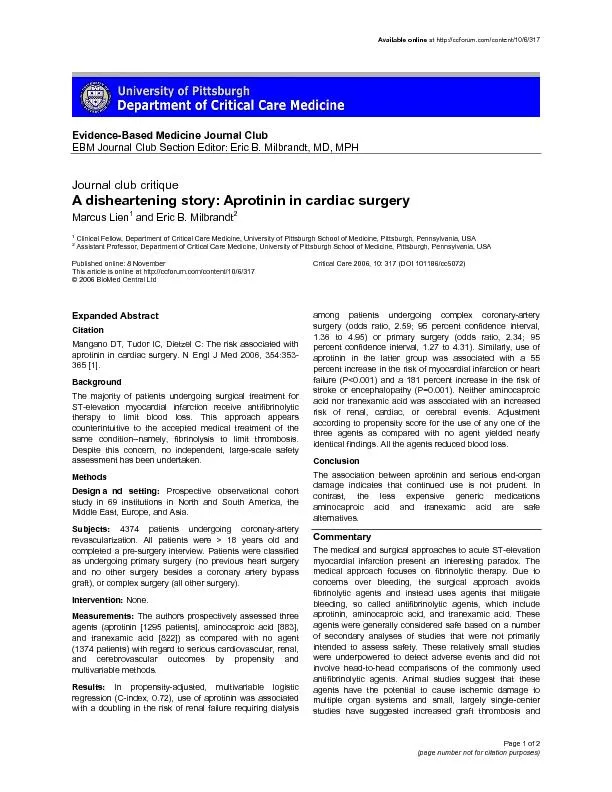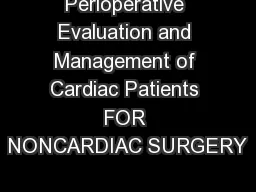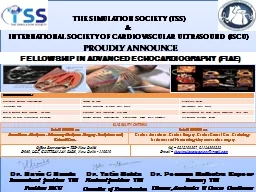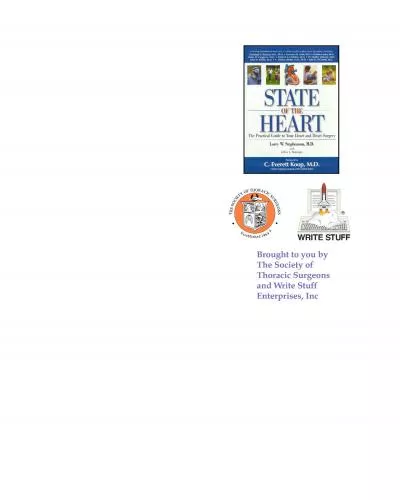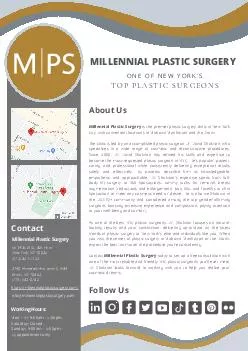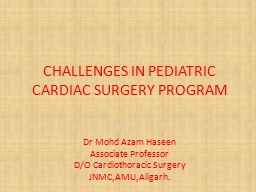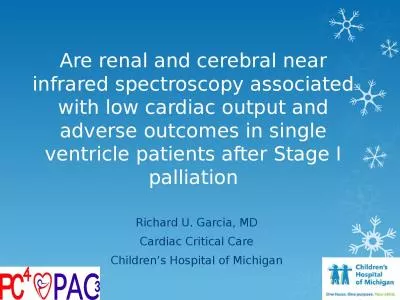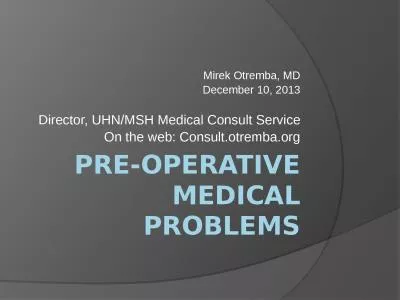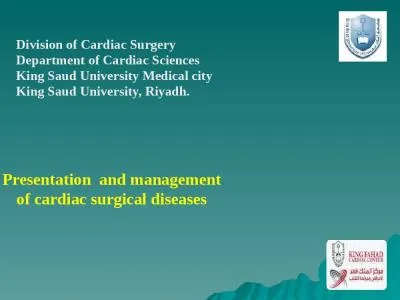PDF-A disheartening story aprotinin in cardiac surgery
Author : yoshiko-marsland | Published Date : 2017-04-12
Y D LODEO HRQOLQ H at httpccf orumc omc ontent 1063 17 YLGHQFH OXE EBM Journal Club Sectio n Editor Eric B Milbrandt MD MPH Journal clu
Presentation Embed Code
Download Presentation
Download Presentation The PPT/PDF document "A disheartening story aprotinin in cardi..." is the property of its rightful owner. Permission is granted to download and print the materials on this website for personal, non-commercial use only, and to display it on your personal computer provided you do not modify the materials and that you retain all copyright notices contained in the materials. By downloading content from our website, you accept the terms of this agreement.
A disheartening story aprotinin in cardiac surgery: Transcript
Download Rules Of Document
"A disheartening story aprotinin in cardiac surgery"The content belongs to its owner. You may download and print it for personal use, without modification, and keep all copyright notices. By downloading, you agree to these terms.
Related Documents

